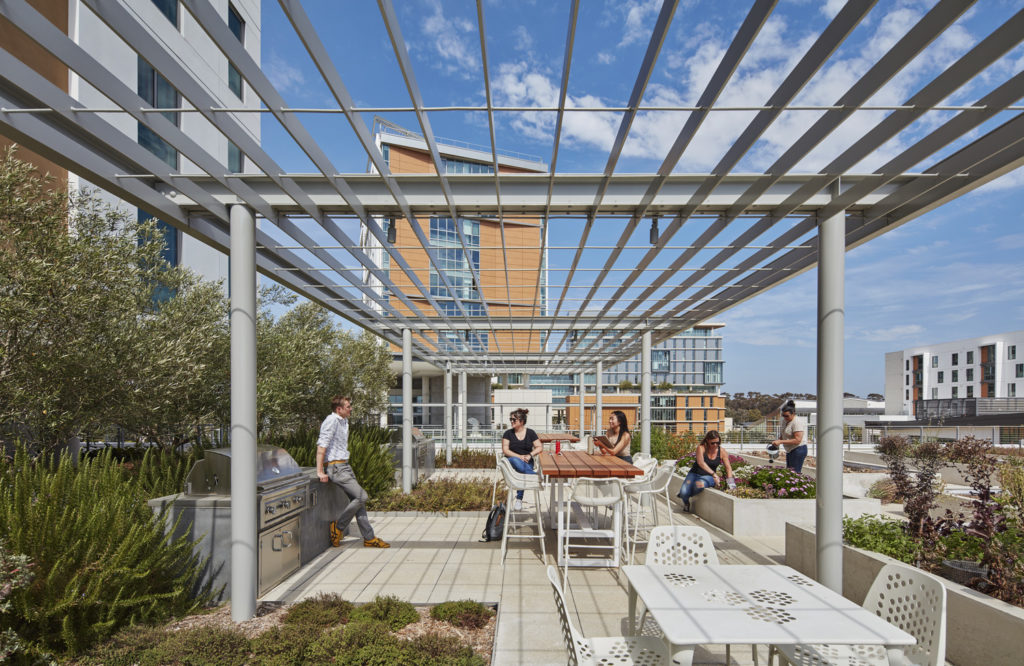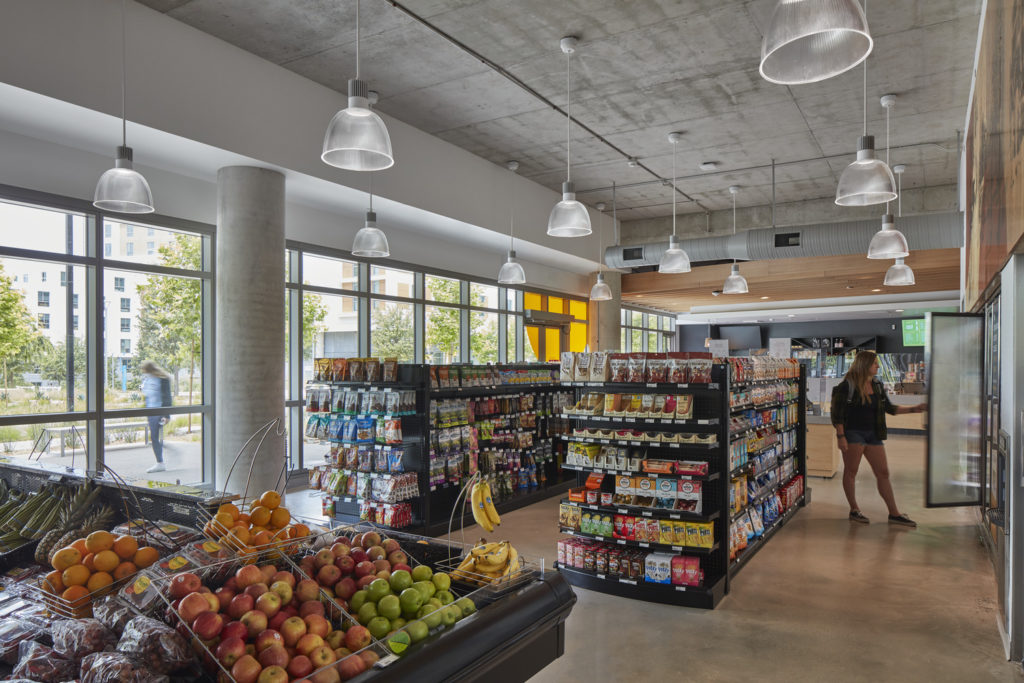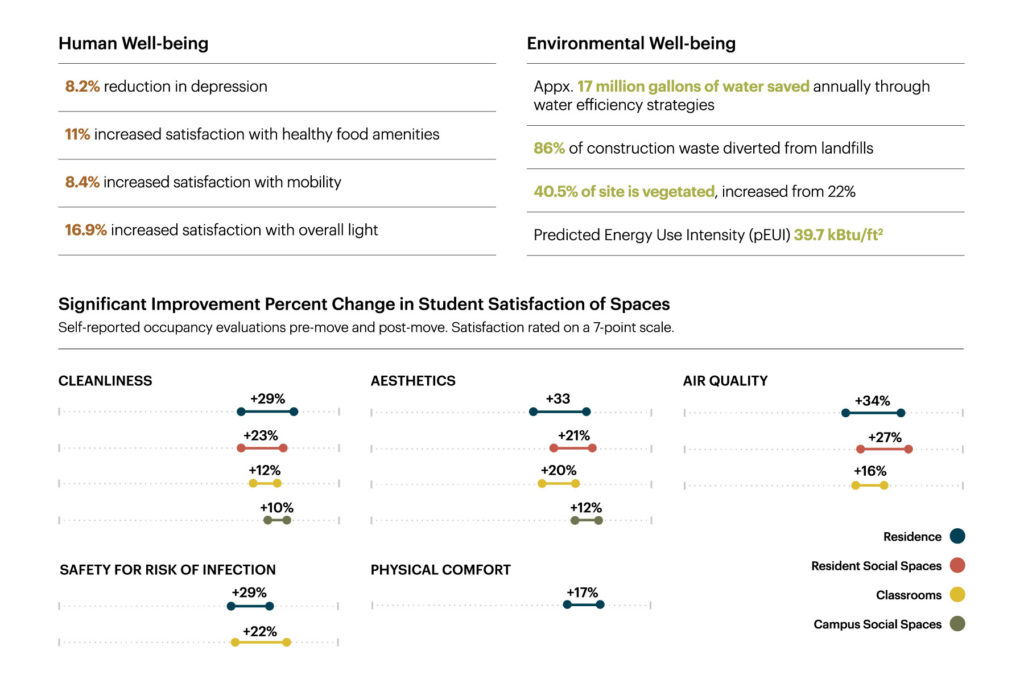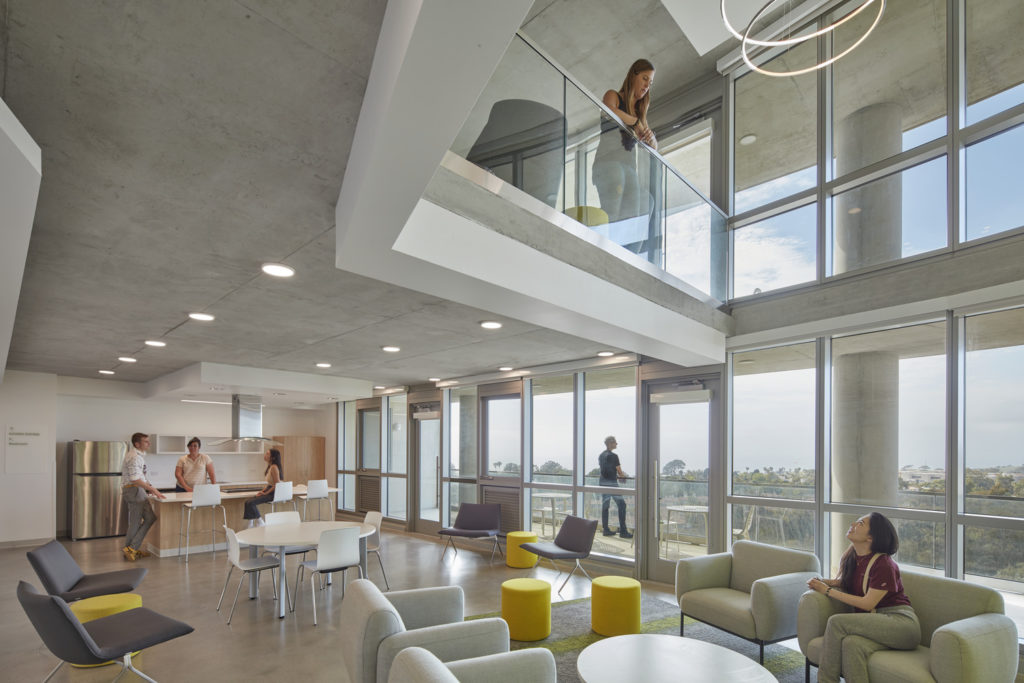The Challenge
Data-driven, research-informed, and evidence-based design within education environments has gained momentum in recent years. But empirical literature in this domain is lacking. To implement sustainable and successful design solutions for education, more evidence and vetted best practices are needed across the diverse education architecture typologies.
As a longtime leader in evidence-based design, the healthcare domain has developed a robust knowledge base linking research to patient outcomes, and this integrated model can serve as a foundation for the education domain. Researching how the built environment influences student outcomes is important not only to advance the fields of architecture and interior design, but also to assure clients that design decisions can positively impact student outcomes. To increase knowledge about the built environment within education, project teams must implement creative models for design research.

Rarely does any group embark on an architecture project without intending to implement some sort of change. Clients and firms often have qualitative goals for education architecture projects, such as “cultivate belonging and community” or “serve as a catalyst for a healthier lifestyle.” Through both tacit and explicit knowledge, people understand the design of the built environment influences students’ thoughts, feelings, and actions. Exactly how design influences students is rather elusive and therefore not readily replicable. Research must be conducted within this domain to broaden our understanding of how specific design strategies affect project outcomes.
The Opportunity
Universities are in a unique position to advance this research agenda, due to the multitude of resources that exist across campus from design and social sciences faculty who are already investigating the intersection between people and spaces, to students who are emerging into this discipline. The inquiry for knowledge that is needed within the education domain can be realized through strategic public-private partnerships that are mutually beneficial.

Capital projects on university campuses already have the existing infrastructure necessary to investigate the impact design decisions have on student, faculty, and staff outcomes. The evidence-based rigor of research and the importance of evaluation after occupancy of new facilities are understood in a university setting. These processes can help carry forward lessons learned to the next capital improvement project, benefiting the built environment of (and targeted outcomes for) the entire campus.
A Live-Learn Lab
Such a process was prototyped at the University of California San Diego (UC San Diego) North Torrey Pines Living and Learning Neighborhood (NTPLLN) design build project. A Detailed Project Program guided the request for proposal process, which included an innovative mandate for original research related to the project. A “campus within a campus,” NTPLLN was looking to create an affordable on-campus living experience designed to foster well-being, social connection, and environmental health. The 1.8 million-square-foot neighborhood is considered academic mixed use and includes over 2,000 beds, plus classrooms, offices, dining, extensive outdoor space, public art, a craft center, and retail.

UC San Diego’s central mission of advancing knowledge aligned with the design team’s research and outcome-driven design approach, setting the foundation for a multidisciplinary research collaboration that asked big questions around student and environment health and well-being. For the NTPLLN project, UC San Diego, HKS, and the Academy of Neuroscience for Architecture formed a research coalition through the non-profit Center for Advanced Design Research and Evaluation (CADRE). This coalition was termed the “Live-Learn Laboratory” and allowed creative solutions for research funding and support, upholding the parallel yet complimentary objectives of different stakeholders (e.g., pedagogical opportunities, research funding, scholarly publishing, applicable insights for the university facilities department and AEC industry). Two students on campus were employed as Live-Learn Fellows to assist in data collection, analysis, and dissemination, for a research study evaluating the influence of the neighborhood on student outcomes, demonstrating the coalition’s interest in investing in students through multiple avenues.

The intent was to study students in their prior residential environments, and then a year later in their new environments, to understand if there were any key changes in perceptions and behaviors as related to student well-being, social connection, and environmental health. This is a rare example of a longitudinal research project integrated into a capital project on campus, which was made possible through this multidisciplinary and collaborative coalition model. Findings suggest that the more satisfied students are with their environments, the better their mental health, demonstrating that the built environment matters. For the full report, please visit this link. The project benefited both the university and the design firm, in distinct and significant ways, while advancing the education architecture and design field as a whole.

Benefit to the Design Firm
To continue this advancement of designing without preconceptions, the NTPLLN design team at HKS is now equipped with a framework that has transitioned traditional intuitive design thinking into foundational metrics-based design strategies towards successful outcomes. At HKS, we continue to work towards a toolkit with which to carry these evidence-based design strategies forward for the consistent betterment of current and future student housing projects. Baseline design strategies are then enhanced by layering on project-specific goals and unique user needs to create exponential positive impact. Through this process, we have learned that a research-based approach leads to the discovery of new ideas above and beyond previously programmed requirements or established thinking. In this way, campus residential communities gain the greatest value in the most economic manner.

Benefit to the University
UC San Diego and the UC system as a whole also benefits from research of this nature, as the University continues to allocate capital funds towards affordable and sustainable housing for its growing undergraduate population. This landmark living and learning neighborhood has served as a test vehicle for many design strategies, and the results from the NTPLLN Live-Learn Lab continue to inform UC San Diego’s current residential projects across campus. It has also become a vehicle for new courses and research collaborations that continue to flourish.
Benefit to the Field at Large
In many large capital projects the implicit knowledge learned over the course of a project by one design firm or design team is not easily transferred to external groups. The coalition model addresses this challenge by providing an external perspective and platform while leveraging internal university resources. By cultivating a sense of curiosity and growth mindset within capital projects, teams can better serve students, faculty, staff, visitors, and the surrounding community. Most importantly, this unique model supports the sharing of knowledge gained and lessons learned across academia and industry, expanding a critical evidence base that makes the case for how investment in the built environment can improve student outcomes.

Path Forward
The UC San Diego NTPLLN campus serves as a model for future higher education projects in which design and research are integrated in order to understand how the built environment influences the student experience. To design without assumptions, research can be conducted for design in an applied manner, systematically investigating unique user and operational needs and working with design teams to turn those insights into practical design strategies. Research about design tends to happen once spaces are occupied, investigating changes in student outcomes longitudinally while tying expected outcomes to specific design strategies that were hypothesized to implement change. Both categories of design research are important to establishing the knowledge base of how design influences learners, while being fiscally responsible with capital funds.

